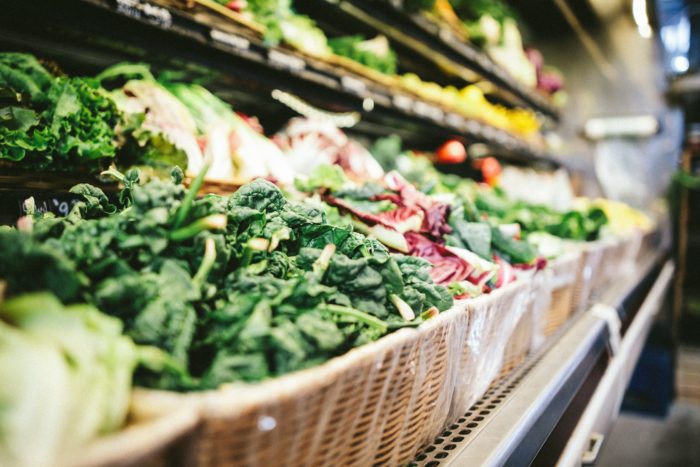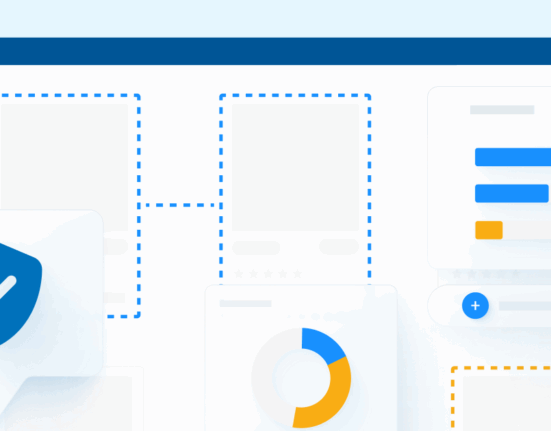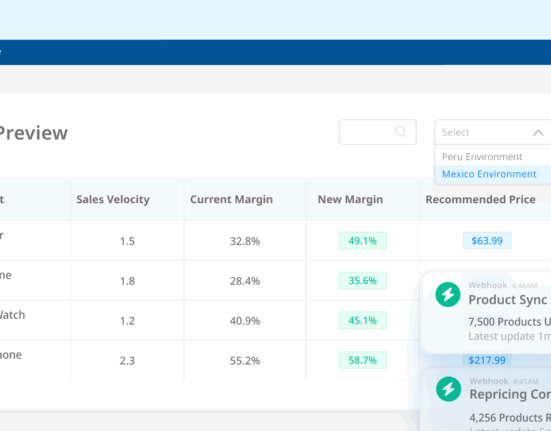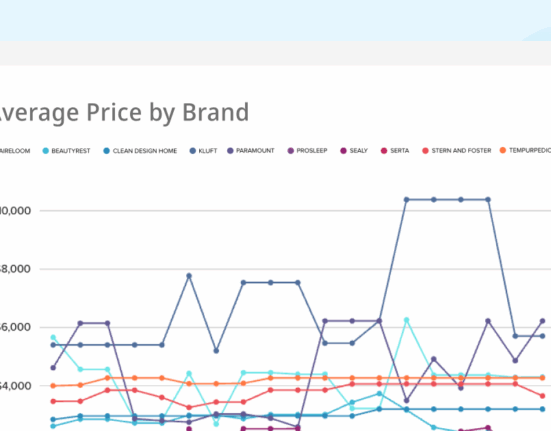It’s no secret that retail has faced enormous challenges over the last few years. From changing customer habits and the rise of direct-to-consumer to COVID-19 upending every reasonable expectation the retail industry had for 2020, successful brands and retailers have to be creative to stay ahead of the game.
Finding new levers for growth can be difficult in today’s climate, but one that can’t be overlooked is partnerships.
Why Brand Partnerships and Collaboration are Important
Even before COVID-19, retail companies were looking to partnerships as a way to manage some of the shifts happening in their industries. McKinsey showed that CPG manufacturers and retailers that deepened their partnerships with one another tended to fare better than those that tried to strong-arm their partners.
Research from Forrester confirmed those findings, stating that there is a direct correlation between the maturity of a business’ partnership program and its growth.
While most CPG manufacturers and retailers saw revenue growth slow tremendously over the last decade, those that fostered collaboration and close partnerships broke the trend of weak sales growth and thinning margins. It’s all about finding win-win scenarios and pursuing them with the right partner.
These retailers develop long-term strategies together, use analytics to help each other understand the customer better, use agile methodologies to implement new initiatives, and collaborate through the entire value chain.
It’s all about finding win-win scenarios and pursuing them with the right partner.
5 Incredible Brand-Retailer Partnerships
It’s one thing to say that collaboration is important, and another to really lean into it. Let’s look at some retail partnerships that show what can be done when both parties work well together.
Google and Target
In 2017, Target announced that it would partner with Google on an initiative that would allow consumers to shop at the retailer via Google Express. People who owned a Google Home system would be able to integrate that system with Target’s payment card, REDcard. They could shop, get support, and more via voice search.
The move made sense for Target because it allowed the retailer to tap into Google’s innovations in natural language processing and voice search, technologies that are becoming more and more embedded in consumers’ lives.
Rather than compete where it’s not strong, Target could better serve its customers by making it more convenient to shop in ways they like. Google benefited by getting more in-depth information about consumer habits, which made it easier to personalize their Google Home experience.
Spotify and Starbucks
Music is integral to the Starbucks experience. Each location plays music that evokes the local scene and creates the atmosphere that the chain is famous for.
That’s why Starbucks partnered with Spotify in 2015. The partnership allowed Spotify users to integrate the mobile app with Starbucks’ My Rewards loyalty program. Customers could use the integrated apps to see what music was playing in their location and add it to their Spotify playlists.
The key goal for Starbucks was to entice music lovers to download the My Rewards app and join its loyalty program while giving current program members a reason to be more active in their app usage. Spotify, on the other hand, was able to drive signups for its paid memberships since Starbucks members who signed up for a paid account would get extra loyalty points.

Sherwin-Williams and Pottery Barn
You can’t pick out a paint color if it doesn’t coordinate with your furniture and decor. To help its customers better coordinate their homes’ color schemes, Pottery Barn and its sister brands partnered with Sherwin-Williams to create paint palettes that match the retailers’ home furnishings.
Together, Sherwin-Williams and Williams-Sonoma (Pottery Barn’s parent company) created seasonal palettes of Sherwin-Williams paint colors that coordinate with the Pottery Barn, Pottery Barn Kids, PBteen, and West Elm collections.
The partnership made it possible for shoppers to get inspired by the color palettes and even choose complete room looks based on the seasonal looks created by both brands. The boost from Sherwin-Williams allowed Pottery Barn and its related stores to provide paint color consultation via their Design Services, unlocking new ways for the retailer to connect with its customers.
Kohl’s and Amazon
Kohl’s and Amazon would seem to be natural enemies, but the partnership they forged in 2019 turned out to be mutually beneficial.
The arrangement was fairly straightforward. Kohl’s would accept Amazon returns at its store, handling the packing, labeling, and shipping for the eCommerce giant. In exchange, Kohl’s would be able to bring a younger, online-first audience into its stores.
As Business of Fashion reported, Kohl’s beat its holiday profit expectations thanks to its ability to bring in new shoppers via the Amazon partnership.
Eat Smart and Kroger
Healthy-eating and plant-based foods are growing trends in the U.S. Eat Smart is a growing player in that space, and its recent partnership with grocery chain Kroger is a major leap for the brand.
Eat Smart launched two new salad kits that have a “Flavors of the World” theme. They contain ingredients that let consumers make salads that capture flavors of different countries around the world.
Bagged salad kits are a growing category and the partnership allows Kroger to make inroads in it. Eat Smart, on the other hand, gets publicity and distribution through a major grocery chain, a must-have for an innovative brand in a fairly new category.

How Brands and Retailers Can Team Up and Win Together
These examples span industries and product categories, and there are some key lessons brands and retailers can take away from these partnerships. Here are a few of the most important ones.
Identify Partnership Goals
You can’t launch a partnership program if you don’t know which metrics you want to influence. Before you embark on a partnership with anyone, determine what you want to achieve.
That can be email list growth, social reach, new customer acquisition, increased basket sizes, increased sales, and more. One of the common threads through all of our examples is that each partnership was mutually beneficial in the pursuit of different goals.
For example, Amazon knew Kohl’s would be a great partner because it would make returns easier to manage, while Kohl’s knew Amazon’s reach and customer base would help it show better sales during the holiday season.
Look for Adjacent but Non-Competitive Partners
The partnership between Spotify and Starbucks seems obvious now that it’s been done, but at the time, it was two giants in totally different spaces combining forces in a novel way.
Google and Target’s partnership fit the same mold. They don’t compete for the same customers, but they do bring a lot of value to each other. As the largest search engine in the world, Google has enormous reach as a vital part of consumers’ buying habits. Target’s ability to better align with how savvy shoppers want to shop, as they do with Google voice search, is something that would take too many resources to develop alone. Likewise, Target has consumer data that Google can use to better hone its ad targeting.
Both companies’ value chains are enhanced by the partnership. You can look for similar opportunities. It’s not all about marketing and directly selling products. Partnerships can bring operational improvements and help enhance the customer experience. It helps the bottom line indirectly but helps it nonetheless.
Make Friends Out of Competitors
“Adjacent but non-competitive” is great, but there are ample opportunities to team up with natural competitors as well.
Kohl’s and Amazon proved that with their partnership. We always hear about how Amazon and eCommerce are destroying brick-and-mortar retail, but this partnership accentuated Kohl’s natural advantages that its physical locations offered. For Amazon, the partnership helped overcome a logistical hurdle they faced when processing returns.
Don’t immediately write off your competitors. If they can do something you can’t, and vice versa, find a way to make it work for both of you and share in the spoils.
Partnerships can bring operational improvements and help enhance the customer experience.
Break Into Emerging Categories Together
The partnership between Kroger and Eat Smart shows the value of working together to expand into emerging categories.
The bagged salad kit category is growing, but companies still need to increase awareness among consumers. By working with a chain like Kroger, Eat Smart can get its innovative offerings in front of a wider market than they could on their own. Kroger wins because it can be an early mover in a potentially massive market, cementing brand partnerships and winning mindshare among forward-looking consumers.
If you’re a brand trying to create or enter an emerging category, don’t go it alone. Piggyback off of established retailers’ credibility and reach. If you’re a retailer that wants to find new growth opportunities, figure out how you can help innovative brands get to market.
Develop an Ongoing Partnership Strategy
Some partnerships are one-off events, but as we saw from McKinsey’s and Forrester’s, the best partnerships have a long-term view.
Develop a roadmap that outlines shared responsibilities, data sharing agreements, planning cycles, marketing, and measuring ROI. With each partner, find ways to collaborate throughout the value chain and bring something to the table that the other can’t.
Retail is a fiercely competitive space, and for a long time, it was defined by cutthroat competition. To some extent, that hasn’t changed, but what’s clear now is that it’s not always better to go it alone. The success of the partnerships we looked at, and others, is proof that sometimes even the staunchest competitors are better together.









